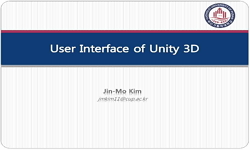이 글은 1950년대에 일어났던 한국 장로교회의 분열(1952, 1953, 1959)의 성격에 대한 연구이다. 국가적으로 어려운 시기에도 분열을 선택하였던 이유가 무엇이었을까? 결론부터 말하자면, 교단의...
http://chineseinput.net/에서 pinyin(병음)방식으로 중국어를 변환할 수 있습니다.
변환된 중국어를 복사하여 사용하시면 됩니다.
- 中文 을 입력하시려면 zhongwen을 입력하시고 space를누르시면됩니다.
- 北京 을 입력하시려면 beijing을 입력하시고 space를 누르시면 됩니다.
특집 : 한국 장로교회 분열에 대한 재조명 ; 1950년대 한국 장로교회의 분열 연구: 역사에 나타난 패턴을 중심으로 = A Study on the Divisions of the Korean Presbyterian Church during the 1950s: Concerning the Pattern Demonstrated in the History
한글로보기https://www.riss.kr/link?id=A82675015
- 저자
- 발행기관
- 학술지명
- 권호사항
-
발행연도
2011
-
작성언어
Korean
- 주제어
-
KDC
238
-
자료형태
학술저널
-
수록면
9-38(30쪽)
- 제공처
-
0
상세조회 -
0
다운로드
부가정보
국문 초록 (Abstract)
이 글은 1950년대에 일어났던 한국 장로교회의 분열(1952, 1953, 1959)의 성격에 대한 연구이다. 국가적으로 어려운 시기에도 분열을 선택하였던 이유가 무엇이었을까? 결론부터 말하자면, 교단의 ``외적 원인``이 나타나기 전에 이미 나타난 ``내적 원인`` 때문이다. 그런데 흥미로운 것은 스코틀랜드 장로교회와 미국 장로교회의 역사에 이미 이와 동일한 패턴이 반복되어 나타났다는 것이다. 1) 외적 원인: 교단 정치 상황 속에서 해석되어야 하는 중요한 사건들을 가리킨다. 스코틀랜드 교회의 ``평신도의 목사 추천령,`` 미국 교회의 ``부흥 운동과 노예제도,`` 한국 교회의 ``신사참배 문제``(1952), ``조선신학교``(1953), 그리고 ``WCC``(1959)가 여기에 속한다. 2) 내적 원인: 교단 내의 보수와 진보 사이의 신학적 갈등이다. 급변하는 세상에서의 교회의 정체성이 가장 중요한 논쟁거리였다. 일반적으로 보수 측은 어떤 변화에도 불구하고 성경의 절대적 권위를 존중하는 장로교회의 신학 전통을 지키려 하였다. 이에 반해 진보는 세상이 요구하는 교회의 모습을 갖추기 위해 장로교회의 신학 전통을 변형할 것도 불사해야 한다고 주장하였다. 초기 한국 장로교회는 비교적 보수적 성격을 띠고 있었다. 그러나 1920년대에 자유주의 신학에 영향을 받은 선교사와 유학파 신학자들이 교단에 영향을 행사하면서 내적 갈등이 시작되었다. 무엇보다 1930년 후반에 일제가 신사참배를 강요하면서 보수 측이 영향력을 잃게 되자 진보 측이 득세하게 되었다. 그 결과, 1945년 해방 이후에는 보수, 진보, 그리고 중도 등 3파로 나뉘게 된다. 흥미로운 것은, 프린스턴 유학 동기였으나 신학적 노선을 달리한 3인(박형룡, 김재준, 한경직)이 각기 다른 신학적 노선을 선택하였다는 것이다. 이들은 향후 결국 교단의 분열을 가져온 ``외적 원인``이 되는 사건의 중심인물이 되었다.`
다국어 초록 (Multilingual Abstract)
This article examines the divisions made among Korean Presbyterian Church during the 1950s(``52, ``53, ``59). What was the reason for their decision in the midst of national di?cult times? We would conclude that there had been an ``internal`` cause am...
This article examines the divisions made among Korean Presbyterian Church during the 1950s(``52, ``53, ``59). What was the reason for their decision in the midst of national di?cult times? We would conclude that there had been an ``internal`` cause among them long before an ``external`` cause took place. Interestingly, such pattern was repeatedly shown already in the history of the Presbyterian churches in Scotland and America. 1) External Cause: the major events which needs to be interpreted in the context of the denominational politics. It includes ``The Lay Patronage Act`` for the Scotland Presbyterian Chuch, ``Revivalism and Slavery issue`` for the American Presbyterian Church, ``Shintonism``(``52), ``Chosun Theological Seminary``(``53), and ``WCC`` (``59) for the Korean Presbyterian Church. 2) Internal Cause: doctrinal disagreement within the denomination between the conservative side and the progressive side. The prime issue was the identity of the church in the world that changes rapidly. Generally speaking, the conservative side generally showed their interest in preserving the Presbyterian tradition which emphasizes the absolute authority of the Bible. On the other hand, the progressive side claimed the possibility to alter the Presbyterian tradition as a means to shape the church presentable to the world. The Korean Presbyterian Church started with conservative tendency. But ``internal tension`` began in the 1920s when the liberal missionaries and students who studied liberal theology abroad began to have influence on the denomination. Above all, the progressive side took control after the conservatives lost their influence completely In the late 1930s when the Japanese imposed Shintoism aggressively. As a result, three theological tendencies emerged after Korea was liberated from Japan in 1945: conservative, progressive, and moderates. Interestingly, three former students(Hyungrong Park, Jaejun Kim, and Kyungjik Han) at Princeton chose distinctive theological perspectives. They ended up being the main ?gures at each ``internal cause`` which ?nally brought the division among them.
동일학술지(권/호) 다른 논문
-
특집 : 한국 장로교회 분열에 대한 재조명 ; 1959년 한국 장로교회 분열에 대한 재조명
- 한국장로교신학회
- 박응규 ( Ung Kyu Pak )
- 2011
-
특집 : 한국 장로교회 분열에 대한 재조명 ; 1959년 한국 장로교회 분열 원인에 대한 새로운 접근
- 한국장로교신학회
- 정병준 ( Byung Joon Chung )
- 2011
-
특집 : 한국 장로교회 연합을 위한 모색 ; 한국 개신교 초기 교회 연합 운동의 유산
- 한국장로교신학회
- 박경수 ( Gyeung Su Park )
- 2011
-
특집 : 한국 장로교회 연합을 위한 모색 ; 분열된 한국 장로교회의 화해와 일치를 위한 제언
- 한국장로교신학회
- 임희국 ( Hee Kuk Lim )
- 2011




 eArticle
eArticle KISS
KISS




